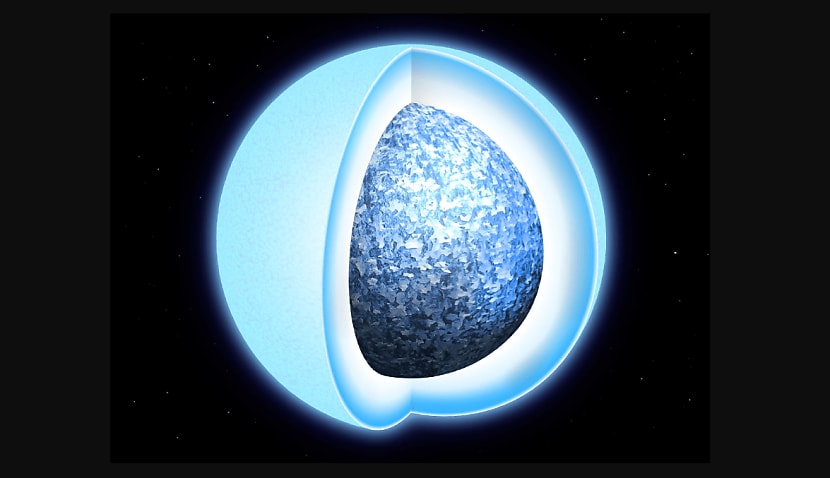Alexander Venner’s world-first discovery on HD 190412 C comes only three years after researchers in the UK discovered the first evidence of the crystallisation process.
White dwarfs are remnants of a long-dead star and undergo a process where their inner cores crystallise over time.
“Once a star like the sun depletes its hydrogen source, which fuels its nuclear fusion, it continues on by fusing heavier elements like helium,” Venner said.
“However, once the core is dominated by carbon, the fusion process cannot continue.
“This causes the star to explode, leaving behind a carbon and oxygen plasma core known as a white dwarf.
“The white dwarf is initially very hot, but as it cools, the atoms in the plasma core begin to stick together, forming grains of crystals.
“Because the pressure is much higher than on Earth, it forms a crystallised solid unlike any we would see here — one which is different to a diamond.”
In a scientific first, the team have also been able to constrain the age of this crystallising white dwarf through its association with the three other stars in its system.
“My focus was on studying these other stars in the system and trying to constrain the amount of time since the system first formed.
“By combining those two factors, we hoped to determine how long the white dwarf had been undergoing crystallisation and if this process had caused a cooling delay.
“In the end, we were a little short of statistical significance, but our findings were consistent with theoretical models that predict crystallisation causes a billion-year cooling delay.”
Venner said white dwarfs are important celestial models, creating conditions that are impossible to simulate on Earth.
“Being able to observe these stellar laboratories, which occur in the sky around us, gives us insight into extreme particle physics.
“It allows us to have a greater understanding of what is happening within the star’s interior, something which would be otherwise inaccessible.”
The original discovery of hard evidence of crystallisation was made by Dr Pier-Emmanuel Tremblay from the University of Warwick in 2019, based on observation from the European Space Agency’s Gaia satellite.
“We’ve made a large step forward in getting accurate ages for these cooler white dwarfs and therefore old stars of the Milky Way," Dr Tremblay said at the time.
“Much of the credit for this discovery is down to the Gaia observations. Thanks to the precise measurements that it is capable of, we have understood the interior of white dwarfs in a way that we never expected. Before Gaia, we had 100–200 white dwarfs with precise distances and luminosities — and now we have 200,000.
“This experiment on ultra-dense matter is something that simply cannot be performed in any laboratory on Earth.”

Adam Thorn
Adam is a journalist who has worked for more than 40 prestigious media brands in the UK and Australia. Since 2005, his varied career has included stints as a reporter, copy editor, feature writer and editor for publications as diverse as Fleet Street newspaper The Sunday Times, fashion bible Jones, media and marketing website Mumbrella as well as lifestyle magazines such as GQ, Woman’s Weekly, Men’s Health and Loaded. He joined Momentum Media in early 2020 and currently writes for Australian Aviation and World of Aviation.

